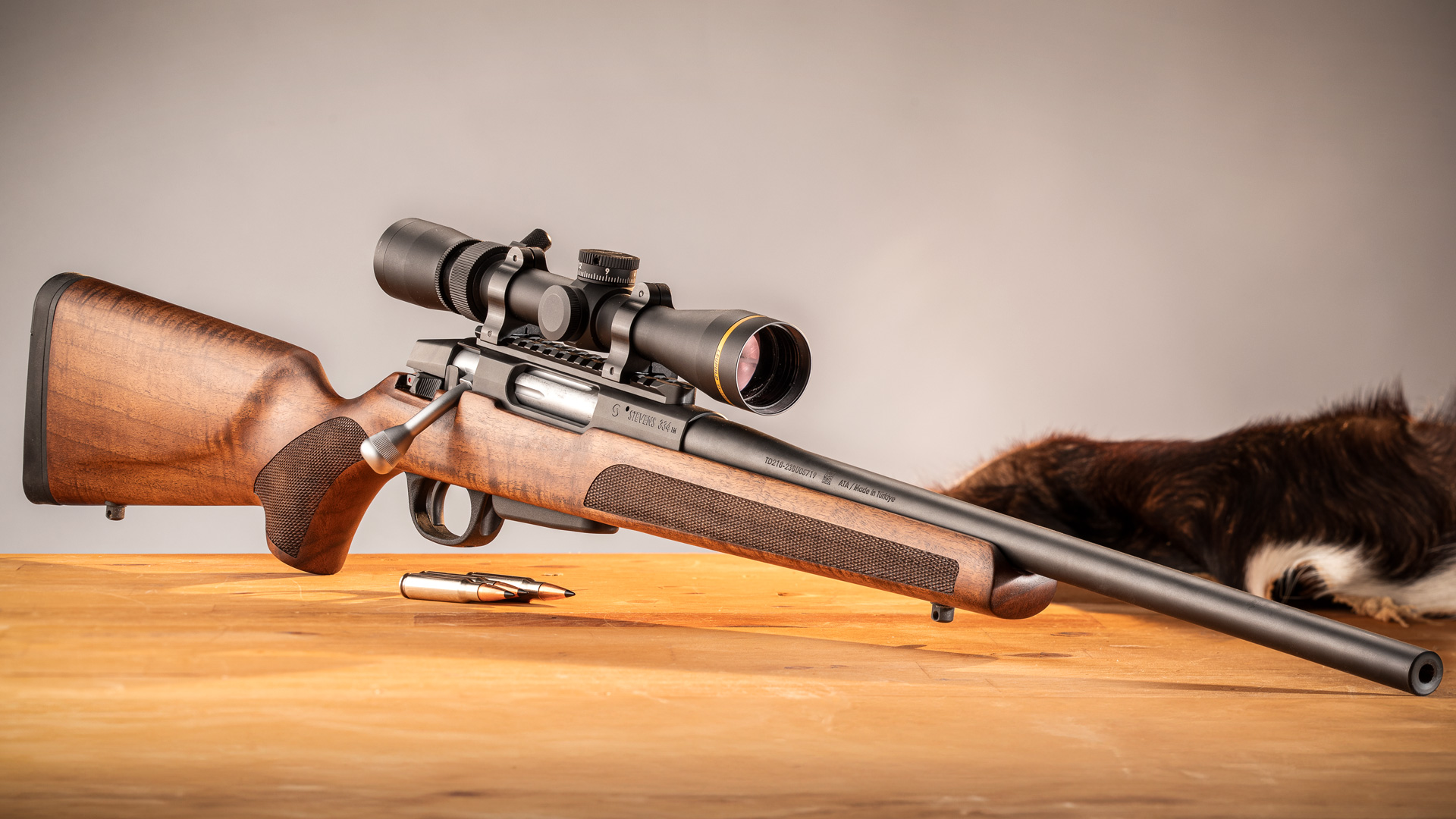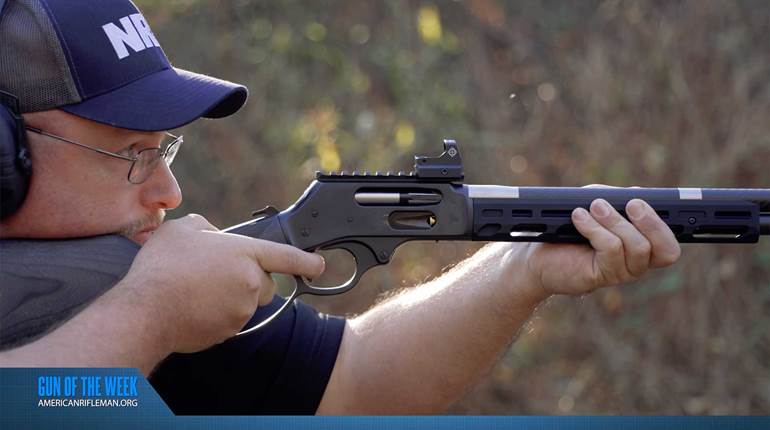
Hunting offers something unique for every individual who wanders afield. Many take it as an opportunity to deploy new gear or techniques, while others enjoy the simplicity of a cool autumn morning and don’t see a need to invest beyond the basics. Firearms like the Stevens Model 334 were built for the latter camp, as it is the pure embodiment of the term “task-specific.” It is a tool built to get the job done without unnecessary expenditure, because, realistically, it doesn’t take the latest feature set to ethically harvest game, and this firearm proves that in spades.
Stevens, a division of Savage Arms, has its budget-friendly centerfire Model 334 bolt-action manufactured in Turkey. It feeds from a detachable box magazine, and two versions are being offered at launch: the 334 Synthetic and the 334 Walnut, the latter of which served as our test sample for this piece. Both variants are currently chambered in .243 Win., 6.5 mm Creedmoor and .308 Win., and our test gun for this evaluation was a .308 model with a 20" barrel.

A recoil lug integrated into the receiver nests within a bedding block affixed within the rifle’s Turkish walnut stock.
Both the barrel and receiver are comprised of carbon steel and are threaded together before a non-reflective matte finish is applied. A pair of action screws, in conjunction with carbon-steel sleeves, sandwich the Turkish walnut stock between the synthetic “bottom metal” and the barreled action. An integrated recoil lug nests inside of a bedding block to mitigate fore and aft movement between the action and the stock.
Inside the receiver, a three-lug bolt facilitates a push-feed system that draws ammunition from the polymer three-round magazine. The nature of this design lends a short 60-degree bolt throw that most users are going to find faster to operate with far greater clearance between their hand and the ocular lens of a mounted optic. The box magazine is removed by pressing rearward on a lever forward of the magazine well. Checkering on the stock’s fore-end and grip was adequate for secure purchase in dry conditions, although we question whether it would be coarse enough for use in wet weather. A pair of swivel studs are screwed into the 334 Walnut’s stock for the addition of a sling.

Pulling back on a small lever just forward of the magazine well (l.) allows the Stevens 334 Walnut’s polymer, three-round detachable box to be removed from the gun for a quick reload. The rifle has a forward-to-fire three-position (middle) manual safety at the right, rear of the receiver. A center setting blocks the trigger while allowing the bolt to cycle. The 334 Walnut’s full-diameter bolt (r.) and three-lug head facilitate a push-feed system with a short 60-degree bolt throw that is fast and conducive to use with an optic.
The 334 Walnut includes a one-piece Picatinny rail pre-mounted at the factory. This allows the user to easily affix an optic with just a set of scope rings. For testing, we chose a Riton 5 Primal 2-12X 44 mm, as it provides an ideal magnification range for this chambering; the lower power settings offer a wide field of view for shots within the brush, while the top end provides precision for longer-range engagements, say, across a field.
After affixing the scope, we chose appropriate hunting loads for the average use case of this setup: Federal’s 150-grain Power-Shoks; Hornady’s 150-grain American Whitetails; and Berger’s 168-grain Classic Hunters. Each tester described the bolt throw and travel as smooth and fluid, with few to no hang-ups.
We all appreciated the three-position safety at the rear, right of the receiver that offers an option to cycle the bolt while still blocking trigger movement. The only gripe with it was that it wasn’t clear as to which position enabled the gun to fire, as both sides were marked with a red dot. Luckily, it was built around an intuitive push-to-fire mechanism.
Our Lyman Digital trigger gauge measured the average break at 7 lbs., 9 ozs., which many shooters will find to be excessive. Given that inexpensive rifles are often most attractive to newcomers, however, a heavy trigger does offer something of a safety margin. An extra pound or two of resistance might just be the saving grace if a rookie hunter accidentally rests a finger on it.
After breaking-in the barrel, a live-fire test revealed consistency well above its price tag, even if the trigger needed to be gently massaged back to get it there. We attributed this to the button-rifled barrel, which is free-floated. The rifle’s thick rubber recoil pad significantly reduced recoil. The relatively straight stock positions the eye directly in line with the scope, and no neck straining was experienced during the evaluation.
Overall, we found the Stevens 334 Walnut to be a capable rifle that is accurate beyond its requirements and that has an action that is refined beyond its cost. It is fairly weighty, though—enough that shooting from conventional field positions became tiresome after a while—and the trigger pull is unquestionably heavy, so it may be best used by a hunter who expects to shoot primarily from a tree stand or some other well-supported position.




































